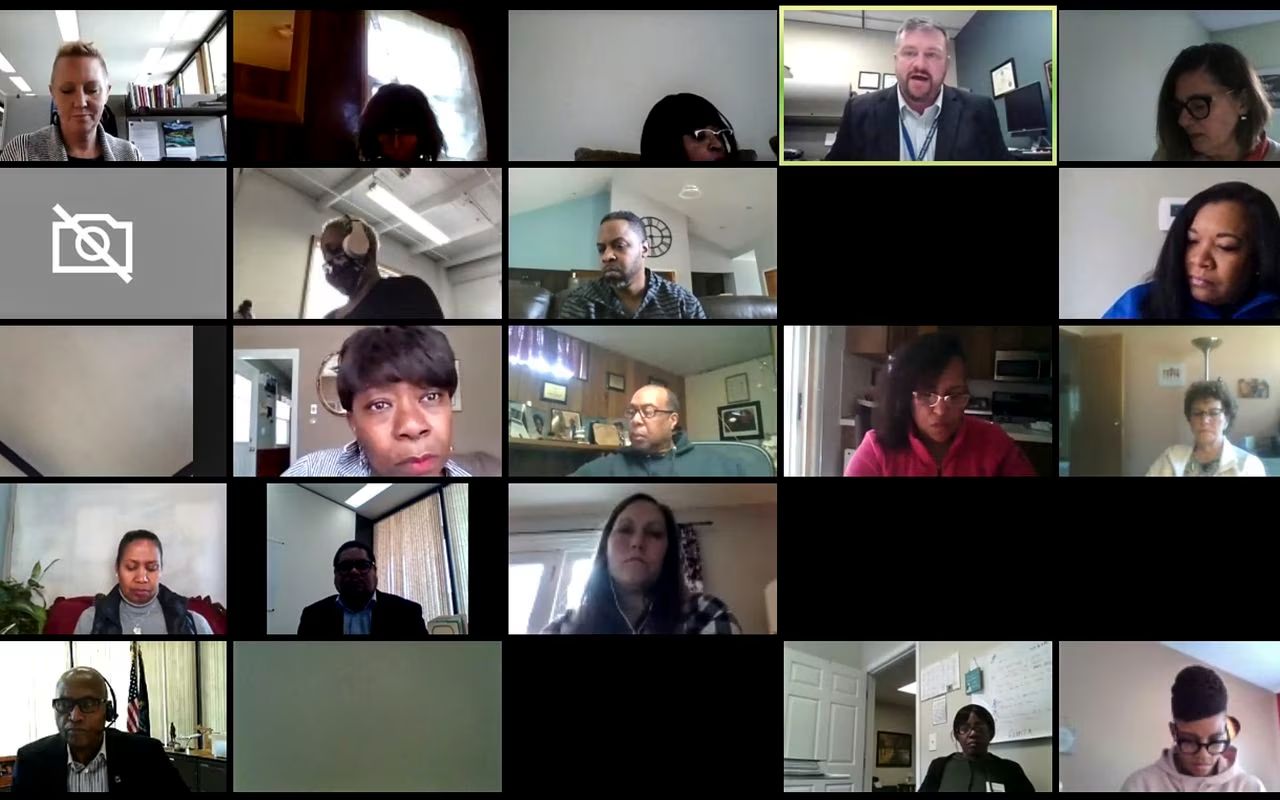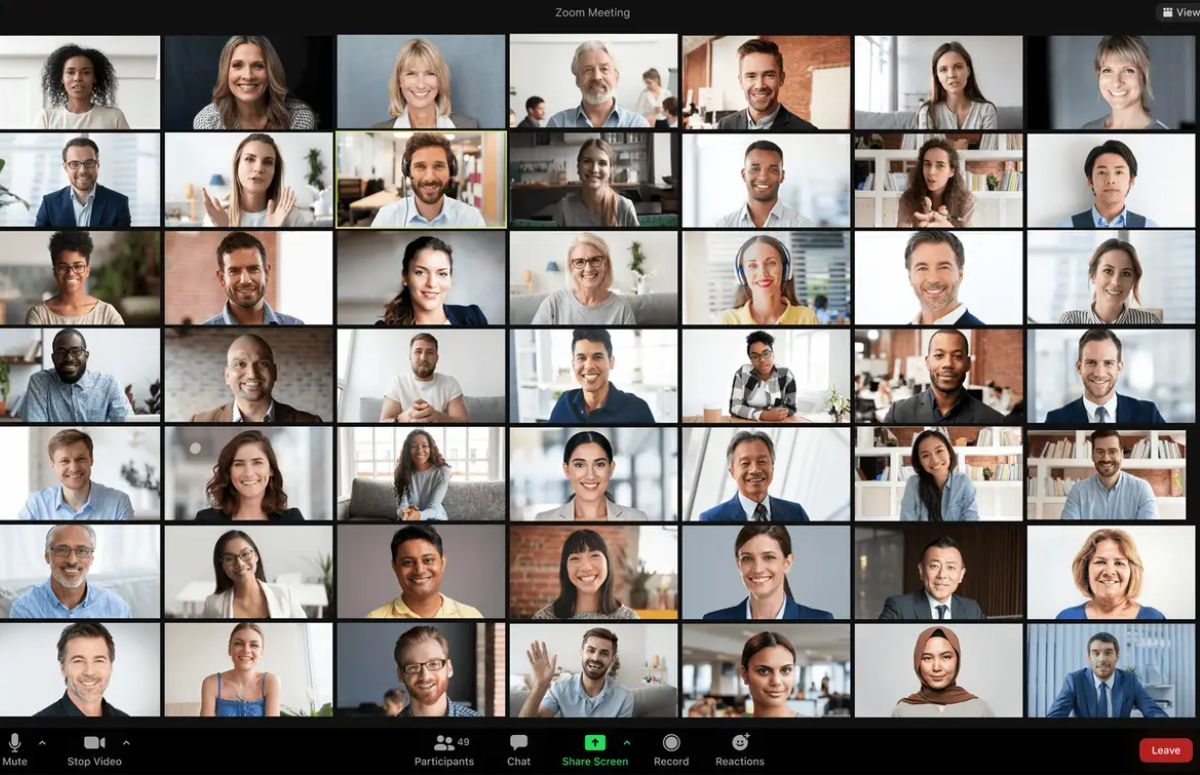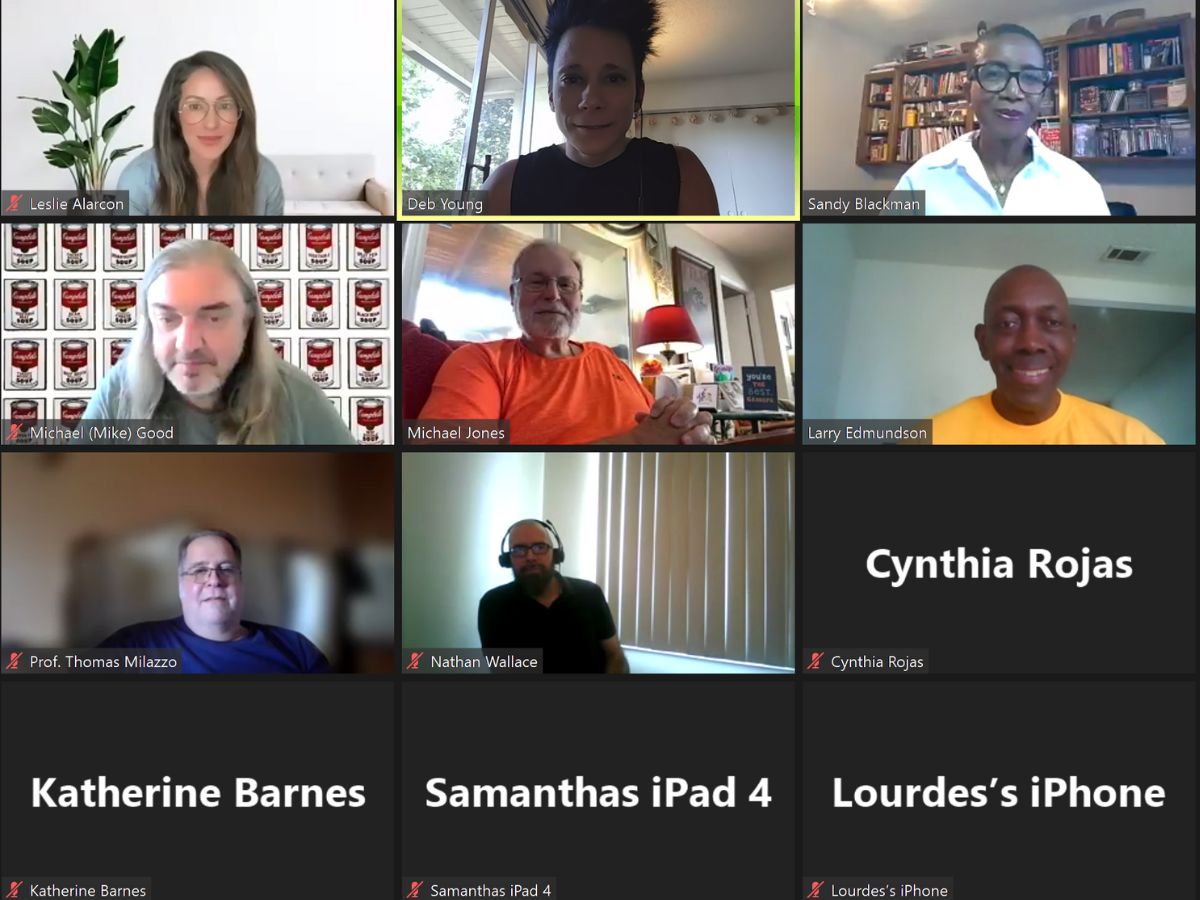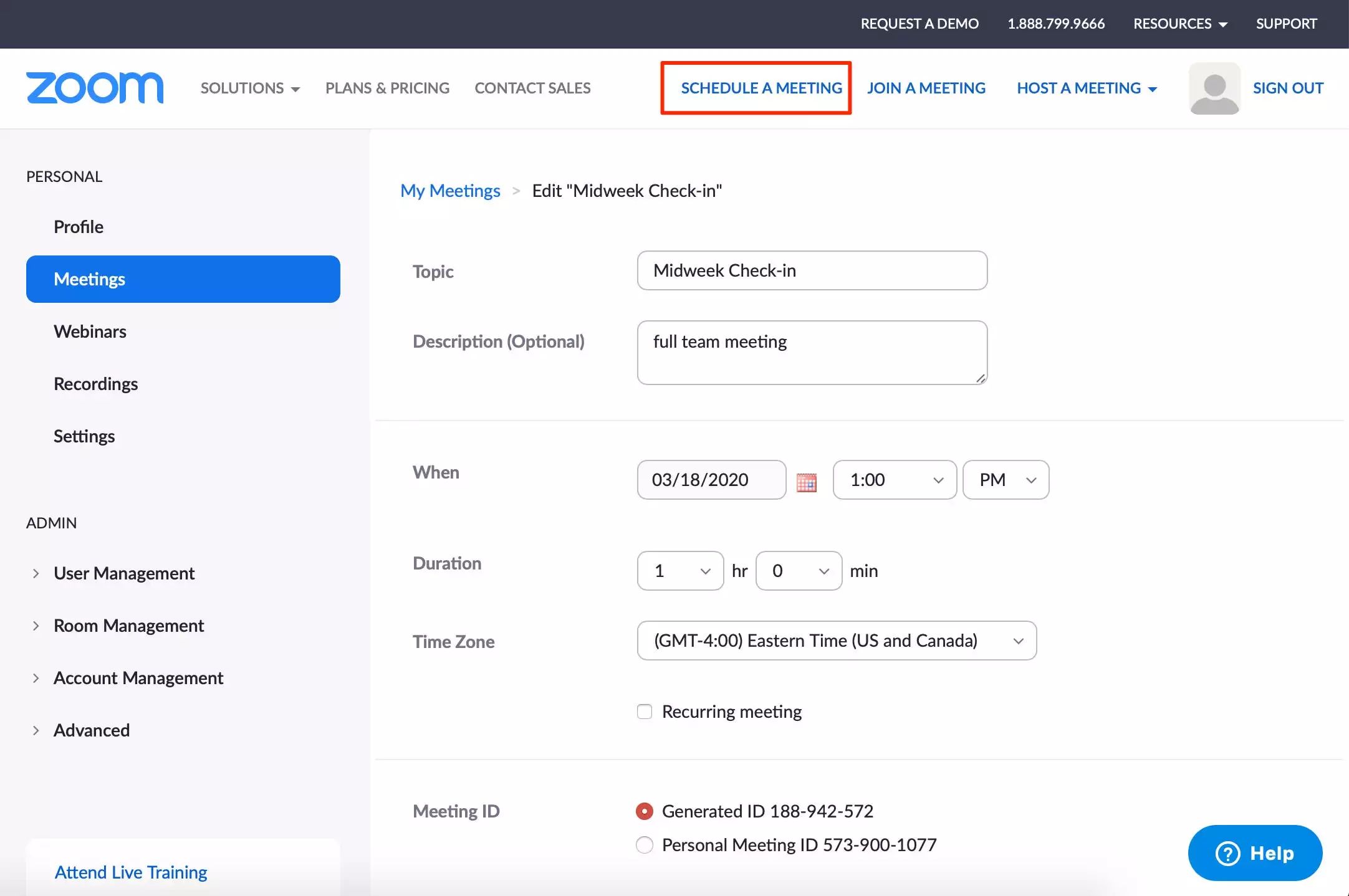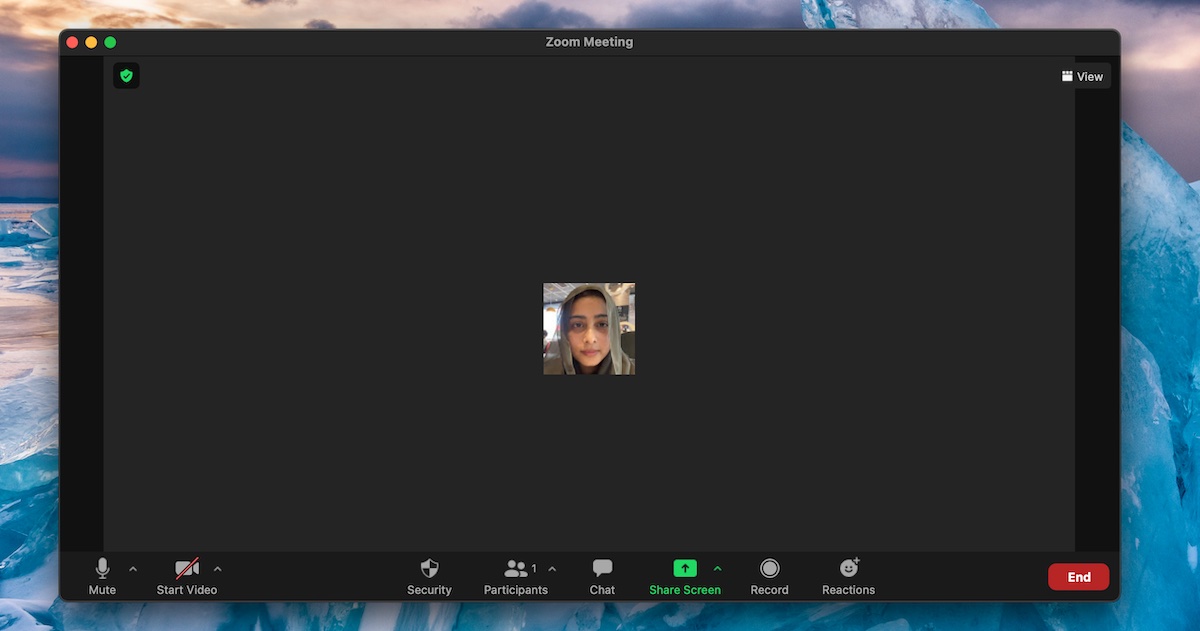Introduction
With the rise of remote work and virtual meetings, platforms like Zoom have become essential tools for businesses, organizations, and individuals to connect and collaborate. Whether you’re hosting a team meeting, conducting an online training session, or organizing a virtual event, how you invite people to a Zoom meeting can greatly impact the success and engagement of the participants.
Properly inviting people to a Zoom meeting not only ensures that they have all the necessary information to join the meeting, but it also sets the tone for professionalism and effectiveness. A well-crafted invitation can help you convey key details, create anticipation, and encourage active participation.
In this article, we will explore why it is important to properly invite people to Zoom meetings and provide you with valuable tips to ensure your invitations are clear, informative, and engaging. By following these best practices, you can maximize attendance, enhance the meeting experience, and ultimately achieve your objectives.
Why It’s Important to Properly Invite People to Zoom Meetings
When organizing a Zoom meeting, it’s easy to overlook the invitation process and assume that simply sharing a meeting link will suffice. However, taking the time to properly invite people to your Zoom meetings can significantly impact the success and effectiveness of the session. Here are a few reasons why it’s important to pay attention to your invitations:
- Create a Professional Impression: Your invitation is often the first point of contact between you and the meeting participants. By crafting a well-designed and informative invitation, you establish professionalism and give the impression that the meeting is well-organized and worthwhile.
- Ensure Attendance: A clear and detailed invitation can help ensure that invited participants understand the importance of the meeting and are more likely to attend. When recipients are provided with relevant information, such as the meeting purpose, agenda, and expected outcomes, it increases the chances of their active participation.
- Prevent Confusion and Miscommunication: Sending a well-written invitation helps prevent confusion and miscommunication regarding the meeting details. By providing clear instructions on how to join the meeting, including the date, time, time zone, and any necessary login credentials, you remove potential barriers and increase the likelihood that participants will arrive on time and experienced no technical difficulties.
- Promote Engagement and Preparedness: A thoughtful invitation sets the stage for engagement and preparedness among the meeting attendees. By providing an agenda or a list of discussion points in the invitation, participants can come prepared with any necessary materials or insights, ensuring that the meeting remains focused and productive.
- Enhance Meeting Efficiency: Properly inviting people to Zoom meetings allows you to communicate essential information in advance, saving valuable meeting time. When participants have a clear understanding of the meeting purpose and objectives, they can come ready to contribute and make informed decisions, thus increasing the efficiency of the meeting.
By recognizing the importance of inviting people to your Zoom meetings in a professional and informative manner, you can improve attendance, engagement, and overall meeting outcomes. In the following sections, we will provide you with valuable tips to ensure your invitations are clear, compelling, and effectively convey the necessary information.
Tips for Inviting People to a Zoom Meeting
When it comes to inviting people to a Zoom meeting, there are several best practices you can follow to ensure your invitations are clear, informative, and engaging. Let’s explore some tips to help you create effective invitations:
- Plan Ahead and Set an Agenda for the Meeting: Before sending out invitations, take the time to plan and prepare for the meeting. Define the meeting objectives, create an agenda, and determine what information needs to be communicated to the participants. By setting a clear agenda, you can craft invitations that highlight the key discussion points and expectations.
- Determine the Right Participants and Decide Who to Invite: Identify the individuals who play a crucial role in the meeting and invite only those who are necessary. Consider the relevance of the meeting to each invitee’s role and responsibilities. Keeping the participant list focused ensures that the meeting remains efficient and productive.
- Choose the Best Method for Sending Invitations: Depending on your audience, consider using different communication channels for sending invitations. Email is often the most common method, but you can also use instant messaging platforms or calendar invites. Choose a method that is most convenient and accessible for the invitees.
- Craft Clear and Informative Invitations: When composing your invitations, make sure to clearly state the purpose of the meeting, along with any relevant background information. Use concise and engaging language to capture the attention of the recipients and convey the importance and value of attending the meeting.
- Include the Meeting Details and Instructions: Provide all the necessary information in your invitation, including the date, time, time zone, and duration of the meeting. If there are any special instructions or technical requirements, such as login credentials or necessary software, be sure to include them as well.
- Send Reminders and Confirmations: Sending reminders a day or two before the meeting can help ensure attendance and remind participants of the upcoming event. Additionally, consider sending a confirmation message to those who have accepted the invitation, reiterating the meeting details and their importance.
- Follow Up After the Meeting: Once the meeting is over, it’s important to follow up with the participants. Share any relevant meeting notes or action items discussed during the session. This helps reinforce the purpose and outcomes of the meeting, ensuring that everyone stays on the same page and remains accountable for their assigned tasks.
By implementing these tips, you can create invitations that grab attention, provide the necessary information, and encourage active participation in your Zoom meetings. Remember, the invitation sets the tone for the meeting, so it’s crucial to invest time and effort into crafting invitations that communicate professionalism and engagement.
Plan Ahead and Set an Agenda for the Meeting
Before sending out invitations for your Zoom meeting, it’s important to plan ahead and set a clear agenda. Taking the time to define the meeting objectives and create an agenda will not only help you stay organized but also ensure that your invitations effectively convey the purpose and expectations of the meeting. Here are some key points to consider:
- Identify the Purpose: Ask yourself what you hope to achieve with this meeting. Clearly define the objective, whether it’s to discuss a specific project, make important decisions, or provide updates on a specific topic. Having a clear purpose in mind will guide the agenda and enable you to create highly focused invitations.
- Create an Agenda: Break down the meeting into specific discussion points or topics. Determine the order of the agenda items and estimate the time needed for each. This will help you and the participants stay on track and ensure that all necessary topics are covered within the allocated time.
- Communicate the Agenda: Once you have finalized the agenda, incorporate it into your invitations. Clearly state the meeting’s purpose and provide a high-level overview of the discussion points. This will help participants understand what to expect and allow them to come prepared with any necessary information or materials.
- Invite the Right Participants: Consider who needs to be present in the meeting to achieve the objectives. Include individuals who have a direct involvement or influence in the topics being discussed. By carefully selecting the participants, you can ensure that the meeting remains focused and prevents unnecessary distractions.
- Share the Agenda in Advance: Send the invitation and agenda well in advance of the meeting, giving participants ample time to review and prepare. This allows participants to come to the meeting with any questions or contributions related to the agenda items, promoting a more fruitful and engaging discussion.
- Encourage Feedback on the Agenda: Be open to receiving feedback or suggestions regarding the agenda from the participants. This can help ensure that the meeting addresses everyone’s needs and concerns, providing a collaborative and inclusive environment.
By planning ahead and setting a clear agenda, you provide structure and direction to your Zoom meetings. This demonstrates professionalism and ensures that participants understand the purpose of the meeting. Additionally, an agenda serves as a valuable reference point during the meeting, guiding the flow of discussions and keeping everyone focused on the intended outcomes.
Determine the Right Participants and Decide Who to Invite
When planning a Zoom meeting, it’s essential to determine the right participants and carefully consider who to invite. By selecting the appropriate individuals to attend, you can ensure that the meeting remains efficient, productive, and relevant to the topics being discussed. Here are some key considerations to keep in mind:
- Identify Key Stakeholders: Start by identifying the key stakeholders who have a direct involvement or impact on the subject matter of the meeting. These individuals are crucial in making decisions, providing insights, or contributing relevant information.
- Consider Relevance: Evaluate the relevance of the meeting to each potential participant’s role and responsibilities. Invite only those individuals who can contribute meaningfully to the discussion or benefit from the information shared during the meeting.
- Avoid Overcrowding: Keep the participant list focused and avoid overcrowding the meeting with unnecessary attendees. A smaller group tends to be more efficient in decision-making and creates a conducive environment for active participation.
- Consider Diverse Perspectives: Aim to include a diverse range of perspectives in the meeting to encourage brainstorming, innovation, and a well-rounded discussion. Inviting participants from different departments or functional areas can bring fresh insights and ideas to the table.
- Inform the Participants: Clearly communicate the reason for inviting each participant in the meeting invitation. Let them know how their presence and contributions are valued and how their expertise or insights are relevant to the meeting’s objectives.
- Specify Roles and Responsibilities: If there are specific roles or responsibilities assigned to participants, clearly outline them in the invitation. This ensures that everyone understands their contribution and prepares accordingly.
- Request Input from Key Participants: Before finalizing the invitation list, consider reaching out to key participants for their input or suggestions on who else should be included. This collaborative approach helps create a sense of ownership and involvement among the participants.
By carefully determining the right participants and deciding who to invite, you can maximize the effectiveness of your Zoom meetings. Including the relevant stakeholders and individuals with diverse perspectives ensures that the discussions are well-informed, comprehensive, and result in valuable outcomes.
Choose the Best Method for Sending Invitations
When inviting people to your Zoom meeting, it’s important to choose the best method for sending out the invitations. The chosen method should be convenient and accessible for your intended participants. Here are some considerations and options to help you decide:
- Email: Email is one of the most common and widely used methods for sending meeting invitations. It allows you to provide all the necessary details, including the meeting link, date, time, and any instructions or attachments. Email also allows for a more formal and professional tone.
- Instant Messaging: If your team or organization frequently uses instant messaging platforms like Slack or Microsoft Teams, consider sending the Zoom meeting invitation through such channels. This method offers a quick and direct way of communication, making it suitable for internal meetings and quick discussions.
- Calendar Invites: Calendar invites, such as those sent through Google Calendar or Microsoft Outlook, can be a convenient method for scheduling and inviting participants to Zoom meetings. They allow recipients to easily add the meeting to their calendars, and often include features like automatic time zone adjustment.
- Online Collaboration Platforms: If you are utilizing project management or collaboration platforms, such as Asana or Trello, consider incorporating meeting invitations directly within these platforms. This keeps all relevant information centralized and easily accessible to participants.
- Meeting Management Tools: There are a variety of meeting management tools available, such as Calendly or Doodle, that can help streamline the invitation process. These tools allow you to schedule and send invitations with pre-defined meeting templates, automated reminders, and RSVP tracking.
- Consider Accessibility: When choosing the method for sending invitations, consider the accessibility needs of your participants. Ensure that the chosen method supports various devices and operating systems, and that it provides clear instructions for joining the Zoom meeting, particularly for individuals who may be less familiar with virtual meeting platforms.
Choose the method that aligns best with your participants’ preferences and the nature of your meeting. It’s also important to utilize tools or platforms that are readily available and familiar to your audience. By selecting the best method for sending invitations, you can ensure that participants receive the information promptly and conveniently, thus increasing the likelihood of their attendance and engagement in your Zoom meetings.
Craft Clear and Informative Invitations
When inviting people to a Zoom meeting, it’s essential to craft invitations that are clear, engaging, and informative. The goal is to provide recipients with all the necessary details about the meeting while generating interest and conveying the value of their participation. Here are some tips to help you create effective invitations:
- Start with a Compelling Subject Line: Grab the recipient’s attention with a concise and compelling subject line. Summarize the purpose or highlight the key benefit of attending the meeting in just a few words.
- Clearly State the Meeting Purpose: In the opening paragraph, clearly and concisely explain the purpose or objective of the meeting. Let the recipients know why their attendance is important and what they can expect to gain from participating.
- Include a Personalized Greeting: Address the recipient by their name and use a friendly and professional tone throughout the invitation.
- Provide Relevant Background Information: If there is any context or background information necessary for a better understanding of the meeting topics, briefly provide it in the invitation. This ensures that everyone is on the same page and can contribute effectively.
- Highlight the Meeting Agenda: Break down the meeting into clear agenda items or discussion points. Summarize each agenda item with a brief description, along with the allotted time for each topic. This provides structure and clarity to the meeting and allows participants to prepare accordingly.
- State the Meeting Details: Include the date, start time, and expected duration of the meeting. Specify the time zone to avoid any confusion for participants in different geographical locations. Additionally, provide the meeting link or instructions for joining the Zoom session.
- Request RSVP: Encourage recipients to RSVP to the invitation to ensure an accurate headcount and plan accordingly. Include a deadline for RSVPs to help with your meeting preparations.
- Offer Contact Information: Provide your contact information or a point of contact for any questions, concerns, or technical support related to the meeting. This helps participants feel supported and reduces any potential barriers to attending the meeting.
- Keep it Concise and Scannable: Use bullet points, subheadings, and paragraphs to break up the text and make the invitation easy to read and navigate. Avoid using jargon or complex language and keep sentences and paragraphs concise and to the point.
By crafting clear and informative invitations, you set the stage for a successful Zoom meeting. Clear communication of the meeting purpose, agenda, and logistics ensures that participants understand what is expected of them and can come prepared. Remember to proofread your invitations to ensure they are error-free and convey professionalism in every aspect.
Include the Meeting Details and Instructions
When sending out invitations for your Zoom meeting, it’s crucial to include all the necessary meeting details and clear instructions to ensure a smooth and seamless experience for the participants. Comprehensive information allows attendees to join the meeting easily and be fully prepared. Here are some key elements to include:
- Date and Time: Clearly specify the date and start time of the meeting. If applicable, mention the expected duration as well. It’s also essential to consider time zones when inviting participants from different regions.
- Meeting Link or ID: Provide the meeting link or ID that participants will need to join the Zoom session. Include any required passwords or access codes to ensure a secure and hassle-free entry.
- Joining Instructions: Clearly outline the steps participants need to take to join the Zoom meeting. This may include downloading the Zoom app, signing in with their Zoom account, or using the browser-based version of Zoom.
- Meeting Etiquette: Briefly mention any meeting etiquette or guidelines participants need to follow. This might include muting their microphones when not speaking, using the chat feature for questions or comments, and raising their hand to be recognized by the host.
- Technical Requirements: Specify any technical requirements participants should be aware of, such as a stable internet connection, a reliable device with a microphone and webcam, and any specific software or plugins necessary for the meeting.
- Additional Materials: If there are any materials or documents that participants should review or prepare for the meeting, provide clear instructions on where they can access or download them. This ensures that everyone is on the same page and able to contribute effectively.
- Contact Information: Include your contact information or that of a designated person who can assist with any technical difficulties or address questions related to the meeting. This helps participants feel supported and minimizes any potential disruption during the meeting.
By including comprehensive meeting details and clear instructions in your invitations, you minimize any confusion or technical hiccups that participants may encounter. This ensures that attendees can easily join the meeting, come prepared, and actively engage in the discussions without any unnecessary hindrances.
Send Reminders and Confirmations
As the meeting date approaches, it’s crucial to send reminders and confirmations to ensure that participants are well-prepared and have the necessary information at hand. This helps minimize any last-minute confusion or forgotten commitments. Here are some tips to effectively send reminders and confirmations:
- Send Timely Reminders: Send a friendly reminder a day or two before the meeting. This serves as a gentle nudge to ensure participants haven’t forgotten the upcoming session and have set aside the time to attend.
- Reiterate the Meeting Details: In the reminder message, restate the date, time, and duration of the meeting. Include the meeting link or ID, along with any passwords or access codes, to make it easy for participants to locate the necessary information.
- Highlight the Meeting Purpose: Remind participants of the meeting’s purpose and the value of their attendance. Emphasize the importance of their contributions and the opportunity to collaborate and exchange ideas.
- Offer Options for Rescheduling: If necessary, provide alternative dates or times for participants who may have scheduling conflicts. This shows flexibility and accommodates their availability to ensure maximum attendance.
- Confirmation for Accepted Invitations: Send a confirmation message to those participants who have accepted the meeting invitation. This reassures them that their RSVP has been recorded and that they can expect to receive any necessary updates or pre-meeting materials.
- Include Meeting Preparations: Remind participants to come prepared by reviewing any meeting materials, familiarizing themselves with the agenda, and bringing any necessary documents or reference materials.
- Offer Point of Contact for Questions: Reiterate your contact information or that of a designated person who can be reached for any questions, concerns, or technical support. By providing a direct point of contact, participants feel supported and have someone to reach out to if they encounter any issues.
- Consider Multiple Communication Channels: Send reminders and confirmations through multiple channels, such as email, instant messaging, or calendar invites, to ensure that participants receive the information effectively. This caters to different preferences and ensures a higher chance of visibility.
By sending reminders and confirmations, you help participants stay engaged and organized for the meeting. Timely communication and restating the meeting details ensure that attendees show up prepared and ready to contribute, creating a more positive and productive meeting experience for everyone involved.
Follow Up After the Meeting
Effective follow-up after a Zoom meeting is just as important as the meeting itself. It allows you to reinforce the meeting outcomes, address any outstanding action items, and maintain open lines of communication. Here are some tips for a successful post-meeting follow-up:
- Share Meeting Notes: Send a summary of the meeting discussions, decisions made, and action items to all participants. This ensures that everyone is aligned and has a clear understanding of what was discussed and agreed upon.
- Assign and Track Action Items: Clearly assign tasks or action items to the relevant individuals and communicate the deadlines for completion. Consider utilizing project management or task tracking tools to help facilitate accountability and visibility.
- Provide Relevant Resources: If there are any additional resources or documents that were discussed or shared during the meeting, send them to the participants for their reference. This allows them to revisit important information and continue their work based on the meeting outcomes.
- Offer Support: Reiterate your availability and willingness to provide support or assistance to participants as they work on their assigned tasks. Encourage open communication and let them know that you are there to address any questions or concerns they may have.
- Request Feedback: Ask participants for their feedback on the meeting. This can be in the form of a short survey or simply an invitation to share their thoughts or suggestions for improvement. Feedback helps you gauge the effectiveness of the meeting and identify areas for enhancement.
- Plan for Next Steps: If applicable, discuss potential future meetings or actions that need to be taken based on the outcomes of the current meeting. This ensures that plans are in motion and everyone is aware of the next steps to be taken.
- Express Gratitude: Take the time to thank participants for their attendance, contributions, and engagement during the meeting. A simple gesture of appreciation goes a long way in fostering positive relationships and encouraging continued collaboration.
By following up after the meeting, you demonstrate commitment and professionalism while ensuring that the momentum from the meeting is maintained. Effective post-meeting communication helps deliver on the meeting objectives, keeps participants engaged, and fosters a sense of accountability and progress towards the shared goals.
Conclusion
Properly inviting people to Zoom meetings is essential for maximizing attendance, engagement, and meeting success. By following the tips outlined in this article, you can create invitations that are clear, informative, and engaging.
First, plan ahead and set an agenda for the meeting to provide structure and direction. Determine the right participants and invite those who can contribute meaningfully to the topics at hand. Choose the best method for sending invitations, keeping accessibility and convenience in mind.
When crafting your invitations, make sure they are clear, concise, and compelling. Include all the necessary meeting details and instructions to ensure participants can join the meeting seamlessly. Send reminders and confirmations to keep participants informed and prepared.
After the meeting, follow up with participants to share meeting notes, assign action items, and provide relevant resources. Show your support and willingness to assist with any questions or concerns. Request feedback to continuously improve future meetings.
By implementing these best practices, you can create a professional and engaging invitation process that sets the stage for productive Zoom meetings. Remember, effective invitations not only ensure smooth logistics but also convey the value and importance of the meeting to participants. With well-crafted invitations, you can cultivate a positive and engaging meeting experience for all attendees.







